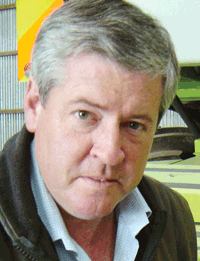Farmer Focus Arable: White clover recovery amazes Bill Davey

Growing proprietary white clover has been, and still is, a profitable option in mid-Canterbury, meaning contracts are keenly sought by farmers.
Sown in the autumn in 15in rows, there is little evidence of its existence within the field until now. We over-sow our clovers with Italian ryegrass and use this to graze store lambs through to mid-October, after which we spray the grass out.
It amazes me where the clover comes from once the grass starts to die back, having survived the winter and intensive grazing during its early life. At the end of October we inter-row sprayed with a non-selective herbicide to take out volunteer clover. At the same time we over-row spray with MCPA/MCPB to control any weeds, particularly thistles.
Once heavy rolled, we can virtually leave it to its own devices. Dry conditions, typical of Canterbury, encourage the clover stolons to run and we only irrigate when soil moisture levels drop below 18% of field capacity, usually only a couple of times before harvest.
Direct cutting is usually pretty straight forward given a hot dry day, after pre-harvest desiccation with Reglone (diquat), although as combine fronts become wider it is imperative to create a very level seed-bed during establishment.
Our tall fescue, now in its third year of seed production, looks promising this year. Last harvest it was threshed by a gale at the critical stage and then hailed upon in the windrow. A yield of 500kg/ha was about half of what we had expected.
It is with great sadness that I am coming to the UK for my father’s funeral. He was a good age, but nonetheless it has been a shock to us all. Living and farming here in New Zealand is all very well until something such as this happens as it’s a long way home.

